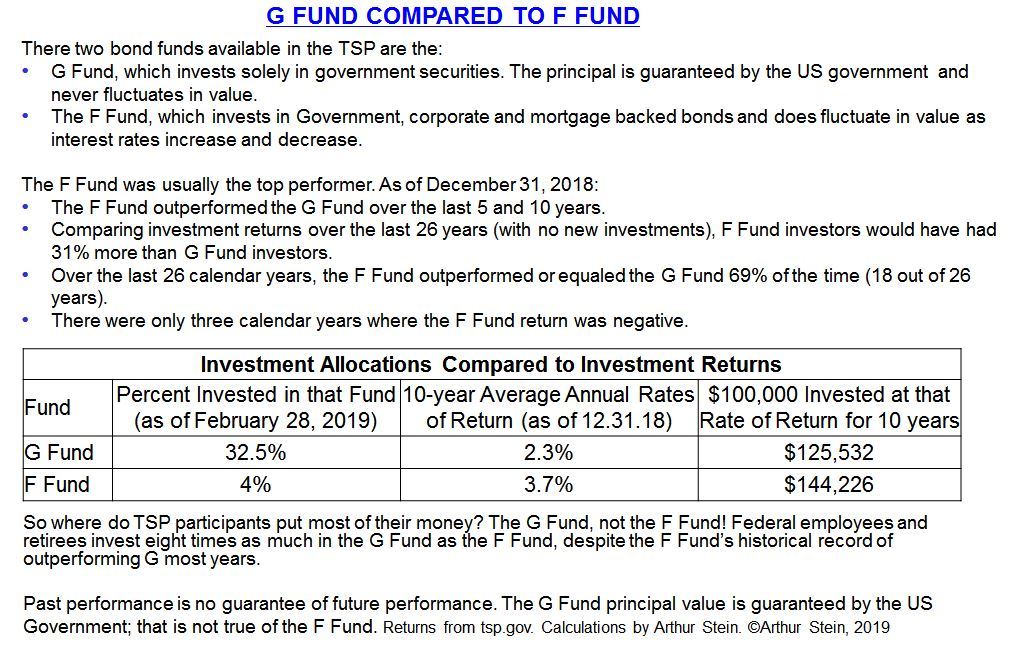
Rewards and risks of the G fund
Most of the 5.8 million workers, retirees and former feds with Thrift Savings Plan accounts have some of their retirement nest eggs in the G fund.
Most of the 5.8 million workers, retirees and former feds with Thrift Savings Plan accounts have some of their optional retirement nest egg invested in the Treasury securities-backed G fund, which more often than not has the lowest returns.
Many are 100% invested in the super-safe G fund, which at the end of February had 32.5% of the total investments in the TSP. It also offers the stock-indexed funds (C, S and I) for large cap stocks, small cap and international, plus self-adjusting lifecycle funds. The least popular investment in the federal 401(k) program is the bond-indexed F fund. It only has about 4% of all the money invested in the TSP.
The G fund is popular because it never has a bad day. During the Great Recession of 2008-2009 hundreds of thousands of TSP investors moved out of the stock funds — which were plummeting — into the G fund. While its returns are low, it’s never had a losing day. Backers say that’s its obvious strength. But critics point out that its low return, coupled with the diet-cost-of-living-feature of the Federal Employees Retirement System plan means that over time FERS retirees lose purchasing power. And those exclusively in the G fund stand to lose the most. Many investors got comfortable with the G fund, which in the 1980s and 1990s returned between 6%-9%. That gradual decline, because of a general decline in interest rates, continues. For a chart saying the returns refer to Monday’s column.
Washington, D.C.-area financial planner Arthur Stein says the F fund usually out performs the G fund. He said the F fund outperformed the G fund in five of the last 10 years, and 18 of the last 26 years. And that comparing investment returns through the end of 2018 over the last 26 years, with no new investments, the F fund investors would have 31% more than those in the G fund.
Here’s how he explains the risk-rewards of the G versus F fund to his clients:

Nearly Useless Factoid
By Amelia Brust
In 1979, the Kingdom of Talossa — aka 14-year-old Robert Ben Madison’s bedroom in Milwaukee — was created when Madison announced he had seceded from the U.S. In the decades since, the boy king created a Talossan language of more than 35,000 words, outlined the laws of his constitutional monarchy, held annual “Talossafests” in a Milwaukee park for Independence Day celebrations, formed political parties, hosted elections and publish semi-regular newspapers. In 1996 he created a website granting citizenship to anyone in the world regardless of whether they too lived in Milwaukee. But conflict soon emerged and dissatisfaction from several Talossans about Madison’s rule spurred them to form a breakaway rival micronation, the Republic of Talossa, while Madison was away on vacation.
Source: Vice
Copyright © 2025 Federal News Network. All rights reserved. This website is not intended for users located within the European Economic Area.
Mike Causey is senior correspondent for Federal News Network and writes his daily Federal Report column on federal employees’ pay, benefits and retirement.
Follow @mcauseyWFED





